1868-1928
Peter Hansen
Peter Hansen belongs to the group of Danish painters who were for obvious reasons called the Funen Painters, since they came from and mainly worked on the island of Funen. Peter Hansen’s work enjoy an inevitable and central position in the Ordrupgaard collection of Danish art, since he and his contemporary Wilhelm Hansen, the founder of Ordrupgaard, went to school together and throughout their lives maintained a friendship which, among other things, laid the foundations of Wilhelm Hansen’s interest in art. One of the qualities that could unite the two men was their respect for the steadily, busily working human being. Wilhelm Hansen himself embodied this work ethic in all that he did, while Peter Hansen made it a key motif in his art. For him the Peasant was the epitome of this ideal, whether he showed Danish farmers or mountain farmers from around the Danish artists’ colony Cività d’Antino, an Italian village in the Abruzzi.
84 x 68,5 cm
1889
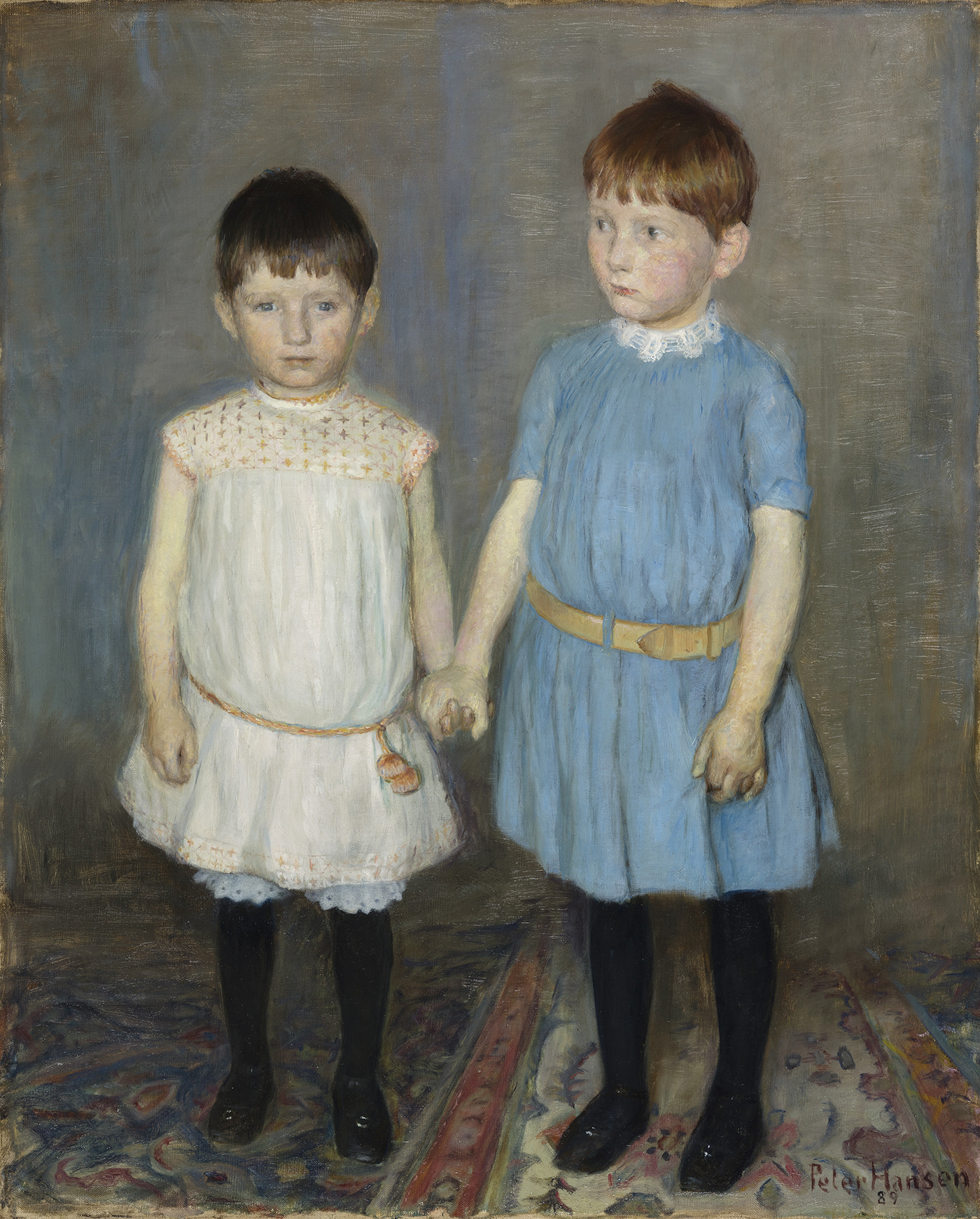
84 x 68,5 cm
1889
Portraits of Two Little Girls. The Artist’s Stepdaughters
Brush , watercolor and pencil on paper.
460 x 615 mm
460 x 615 mm
1900
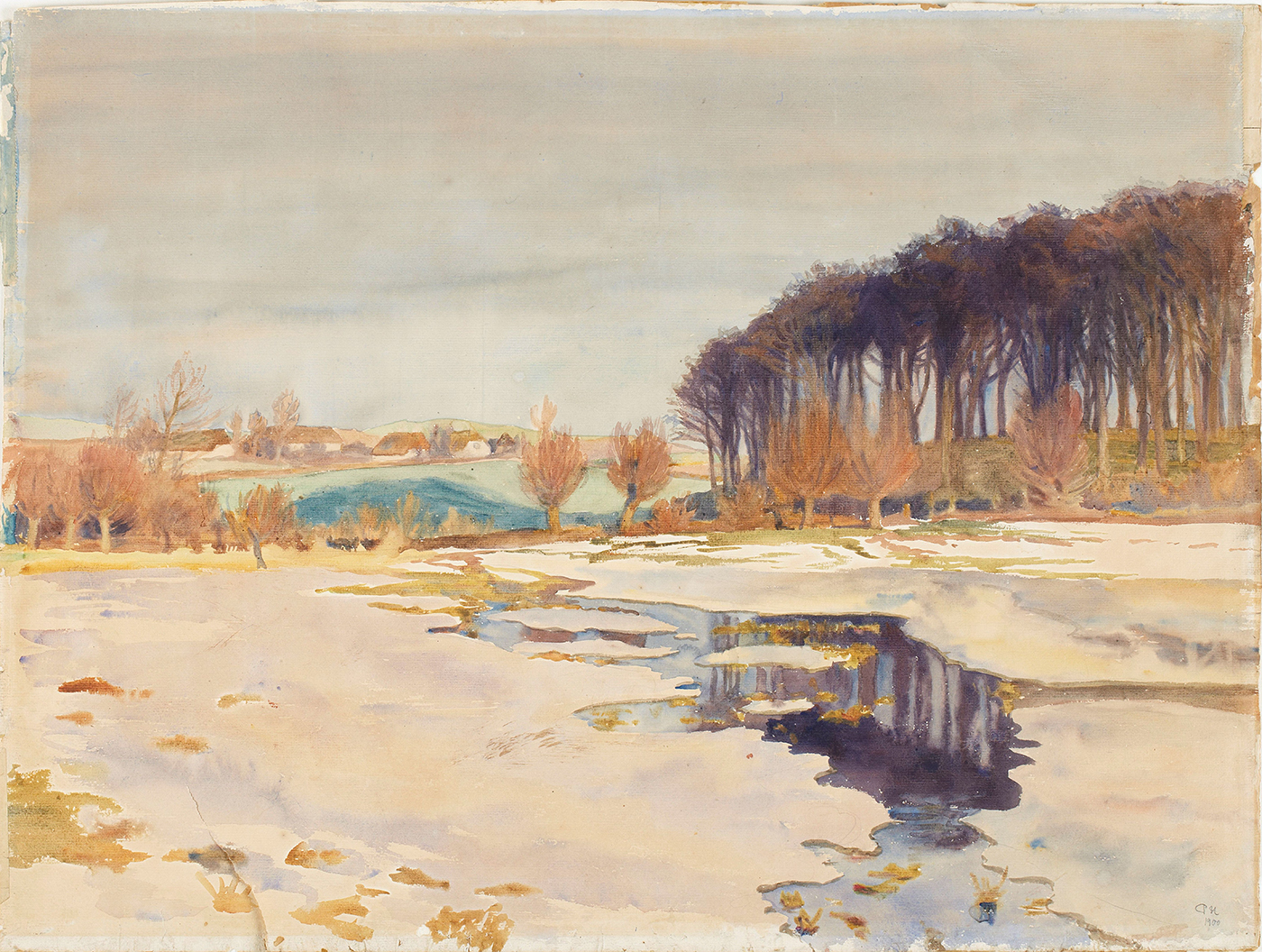
Brush , watercolor and pencil on paper.
460 x 615 mm
460 x 615 mm
1900
Melting Snow. Southern Funen
48 x 73 cm
1902
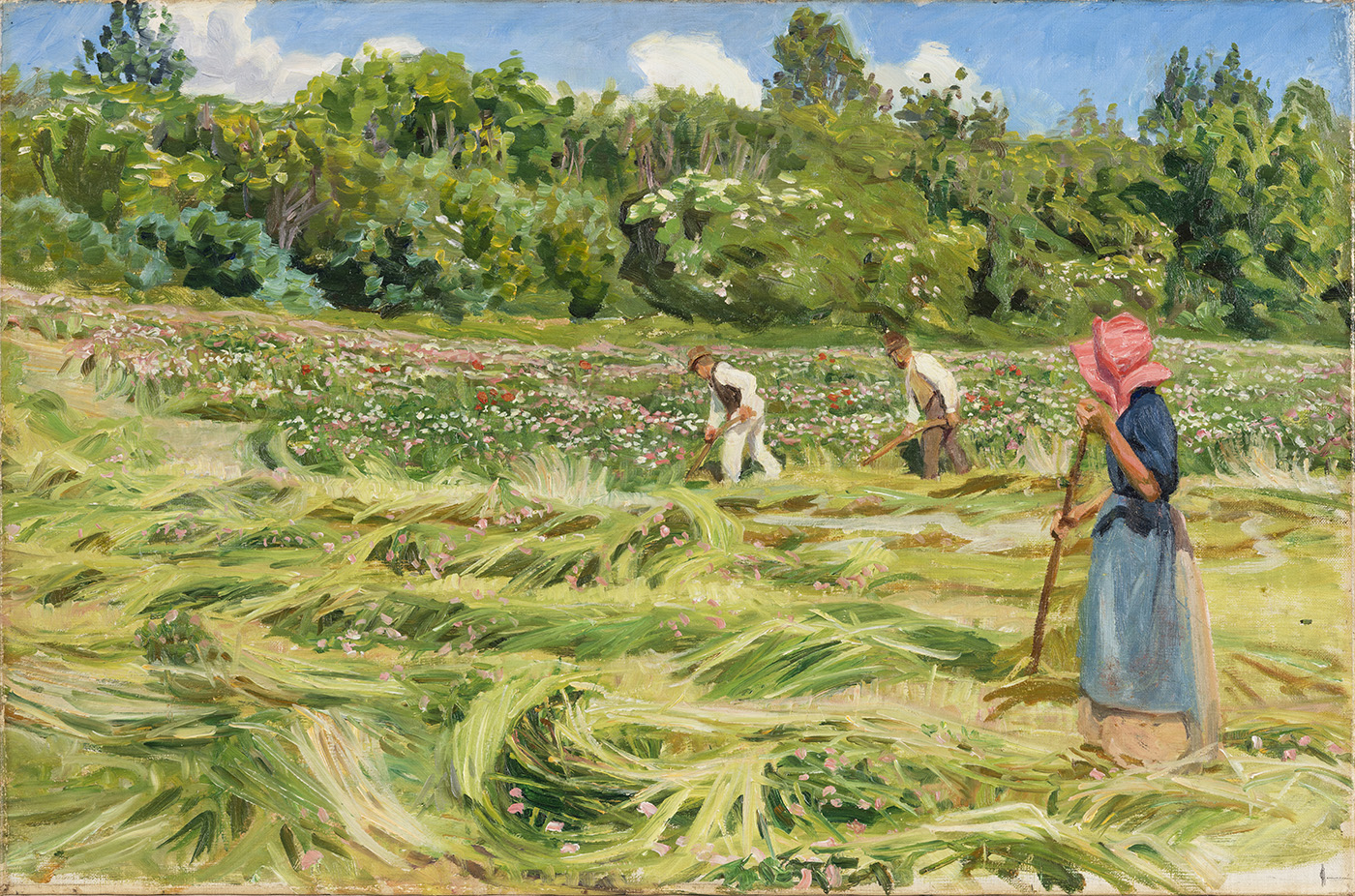
48 x 73 cm
1902
Hay Mowing. Southern Funen
48,5 x 43 cm
1902
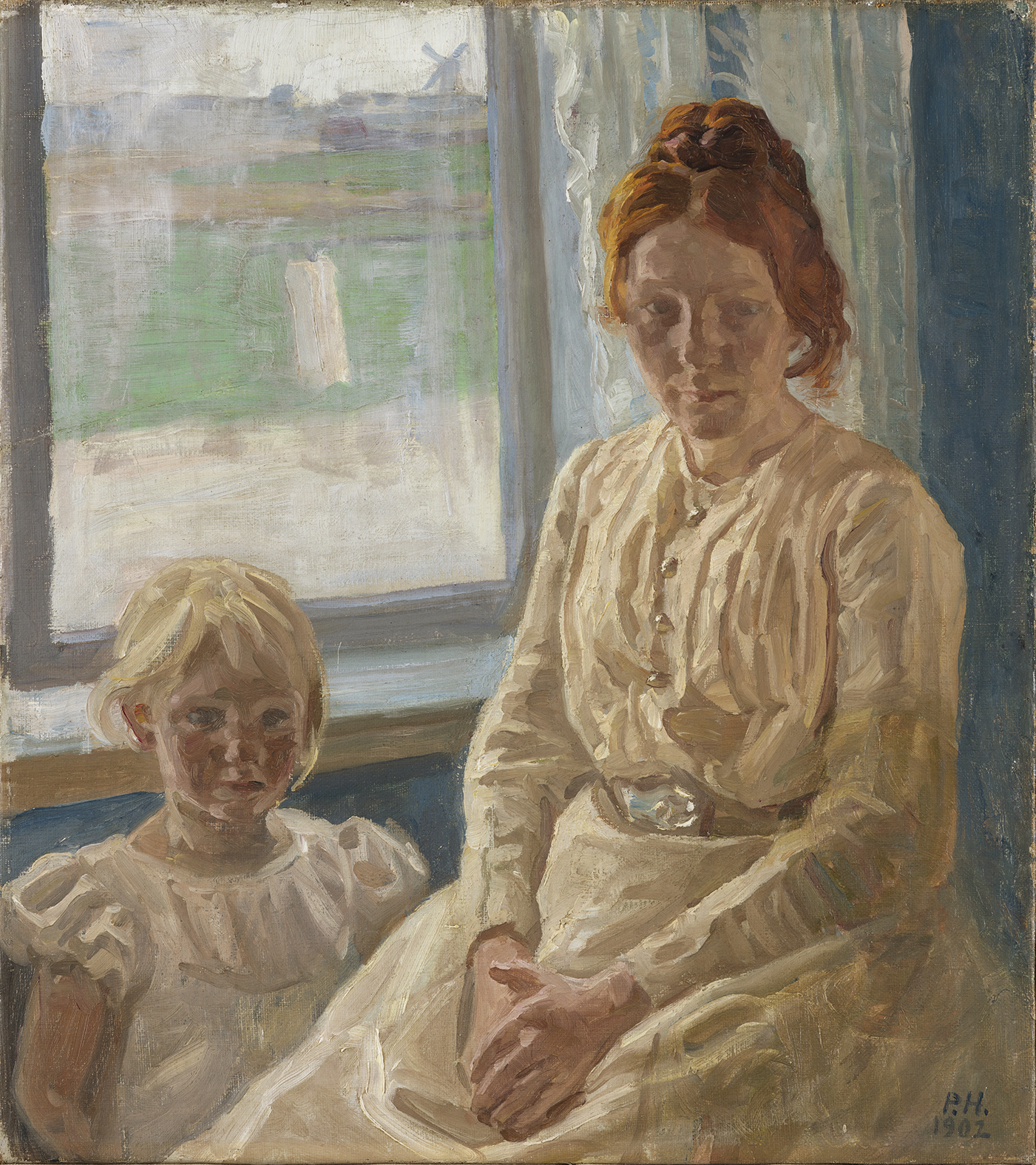
48,5 x 43 cm
1902
At the Window. The Artist’s Daughter and Stepdaughter
Brush and watercolor on paper
315 x 300 mm
315 x 300 mm
1903
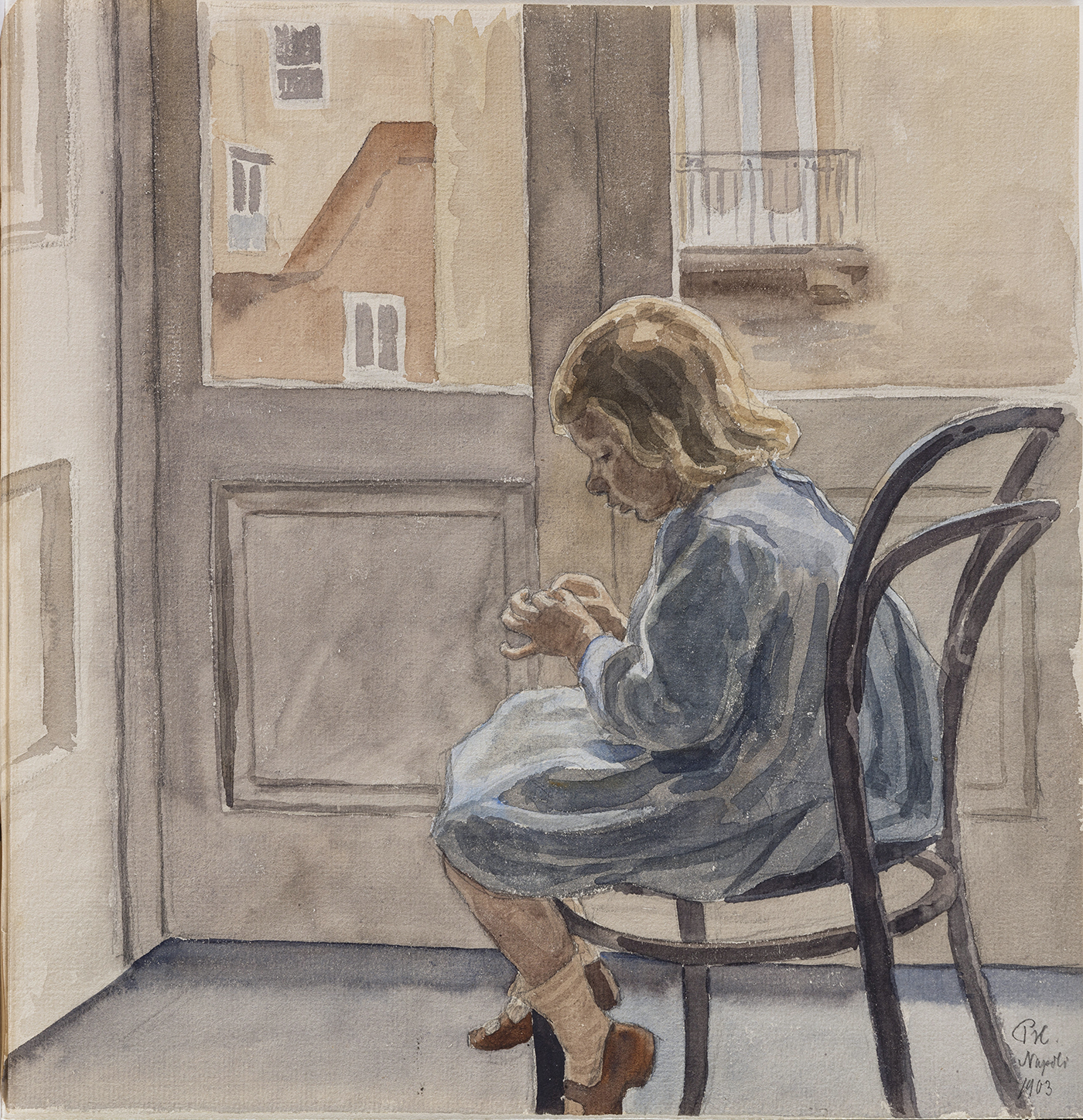
Brush and watercolor on paper
315 x 300 mm
315 x 300 mm
1903
Little Girl with Her Needlework. The Artist’s Daughter
Brush , watercolor and pencil on paper.
275 x 305 mm 1903
275 x 305 mm 1903

Brush , watercolor and pencil on paper.
275 x 305 mm 1903
275 x 305 mm 1903
Outside the Church Door, Naples
Oil on canvas
71 x 98 cm
1904
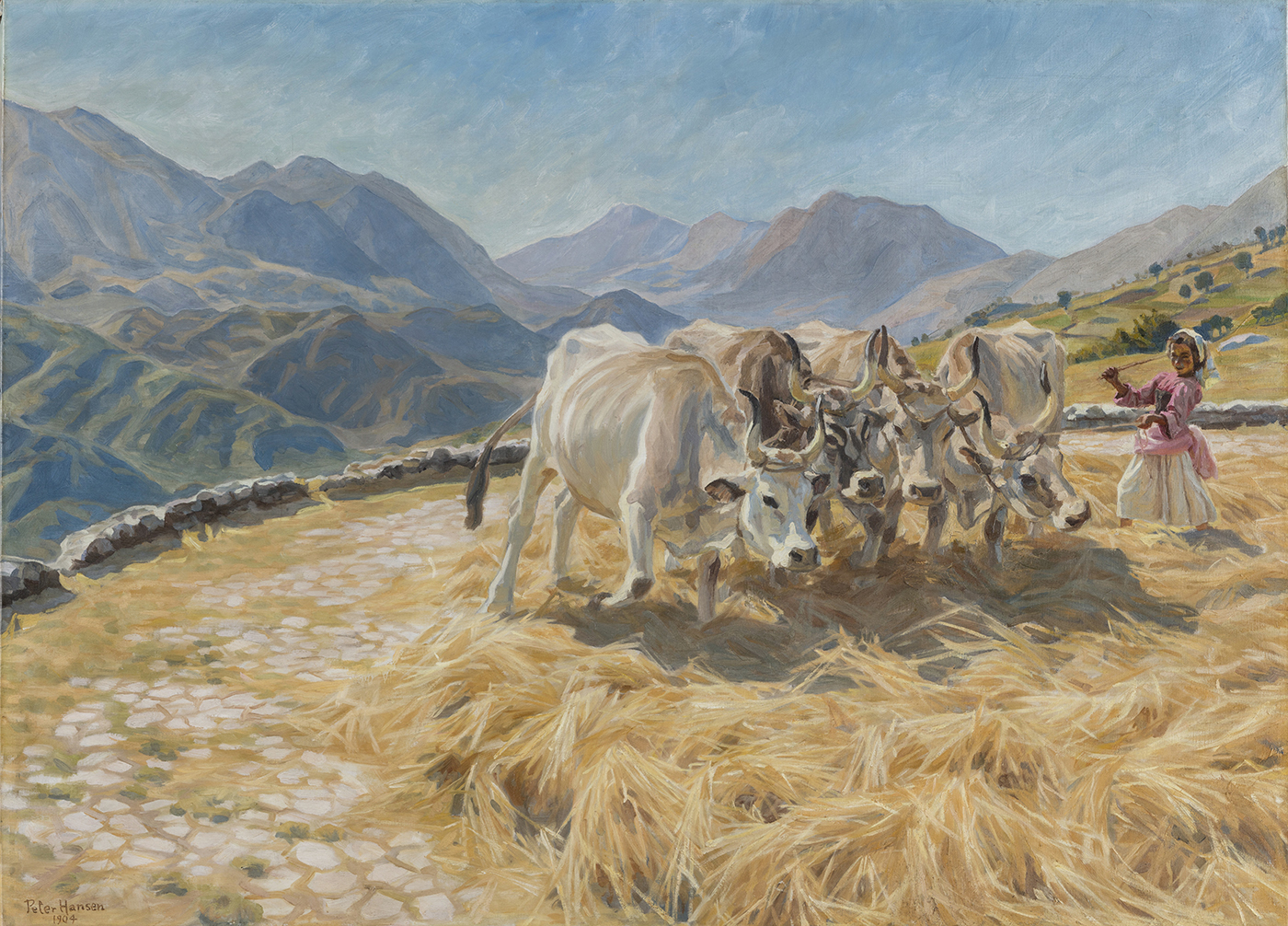
Oil on canvas
71 x 98 cm
1904
Oxen Threshing. Cività d’Antino
The picture is a Southern European variation on one of Peter Hansen’s major Danish works, The Ploughman Turns (1900-1902). Time and time again the visiting Danish painters showed the Italian rural population in harvest scenes, for example, and especially, as in this picture, from the threshing in Cività d’Antino. For Peter Hansen and the other Funen Painters the motif offered the dream of an “ordinary, cheerful, active life” in freedom and in harmony with nature, as a contrast to corrupted modern city life. The peasant in Hansen’s art should therefore be seen, rather than as an expression of political agitation, as an emblem of a vitalistic view of life that gives pride of place to the notion of the healthy and natural. The peasant girl in the picture easily and dexterously manipulates the four big oxen, and judging from her facial expression the work seems to go off like a game. She has unembarrassedly tied up her dress so that the underskirt can be seen, which in 1904 – when the picture was painted – would quite certainly have been viewed as an expression of her unconstrained, bold charm, and so all in all she strikes the fundamental note of Peter Hansen’s art.
Brush and watercolor on paper.
575 x 450 mm 1904
575 x 450 mm 1904
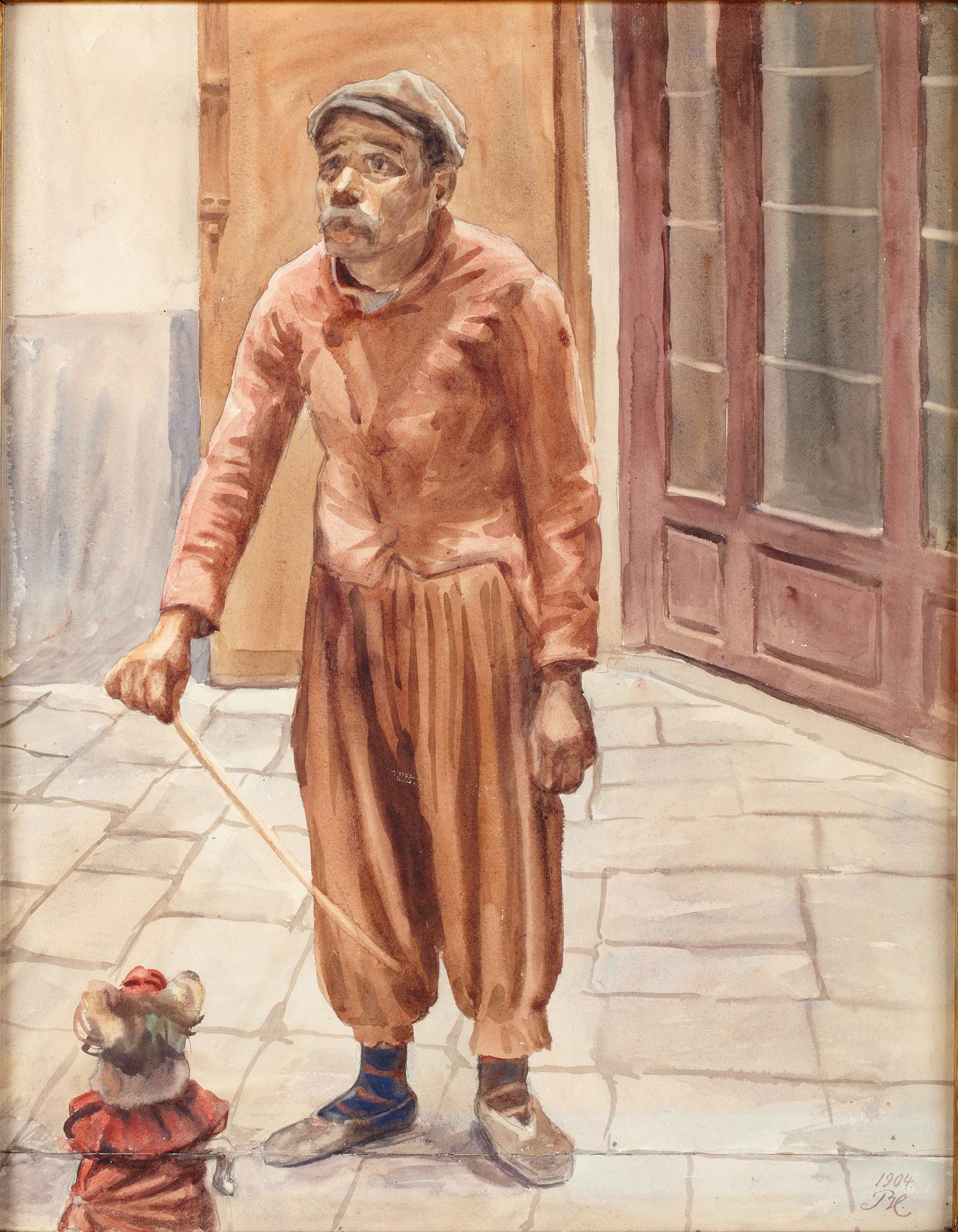
Brush and watercolor on paper.
575 x 450 mm 1904
575 x 450 mm 1904
The Dog Trainer. Italy
57 x 75 cm
1904
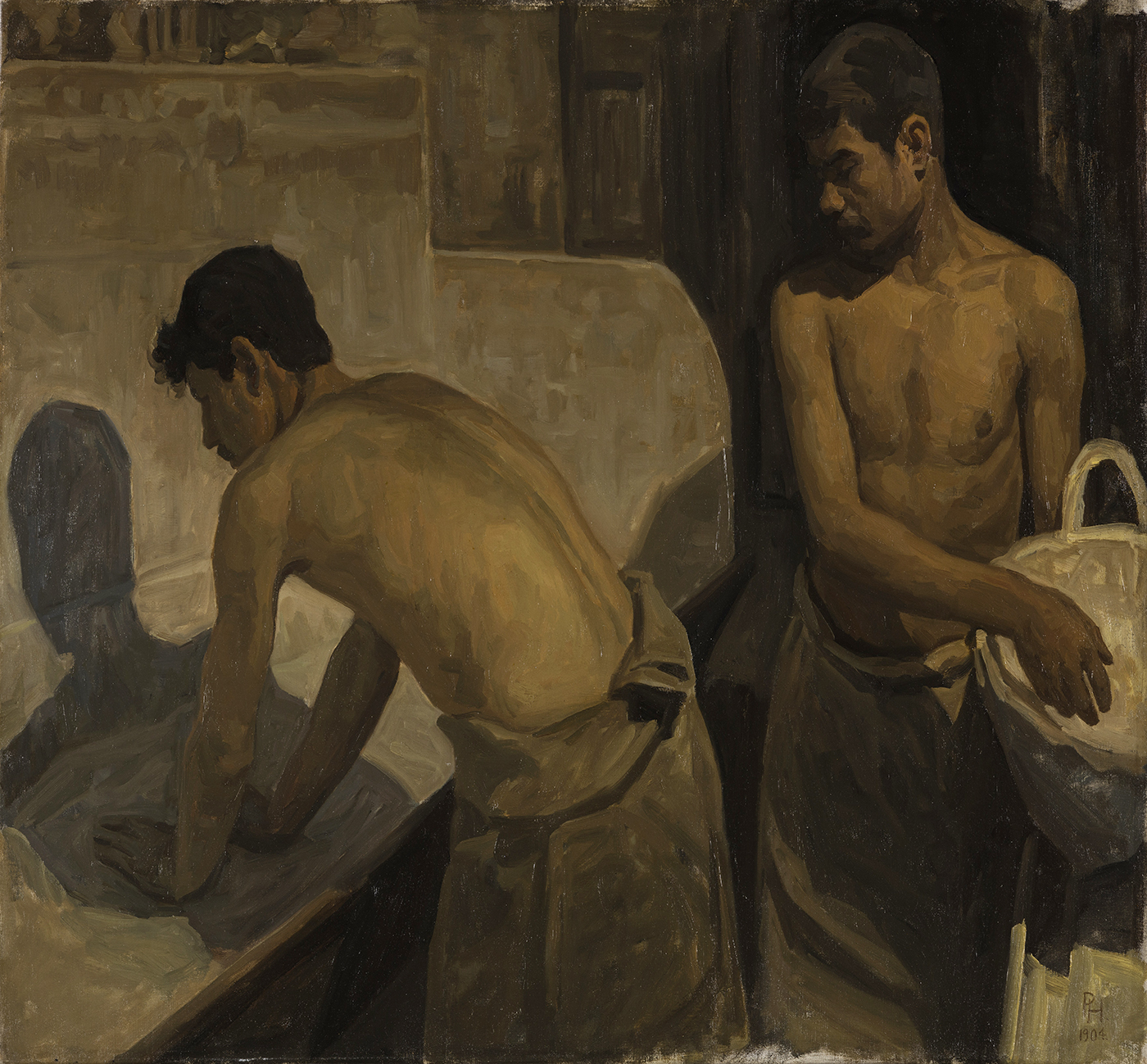
57 x 75 cm
1904
Bakers. Pompeii
Brush, watercolor and pencil on paper
505 x 615 mm
505 x 615 mm
1904
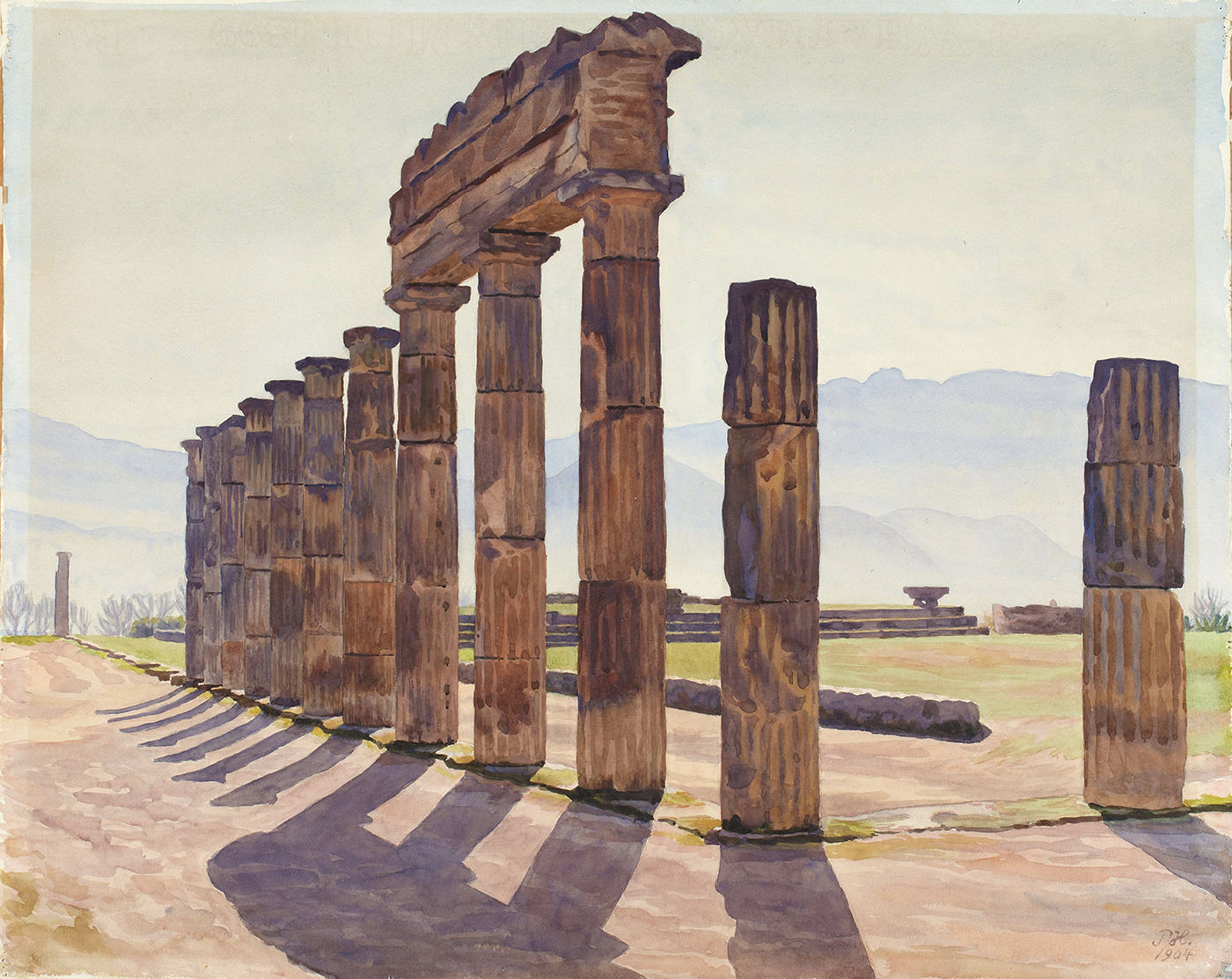
Brush, watercolor and pencil on paper
505 x 615 mm
505 x 615 mm
1904
The Triangular Forum, Pompeii
Oil on cardboard
40,5 x 52,5 cm
1905
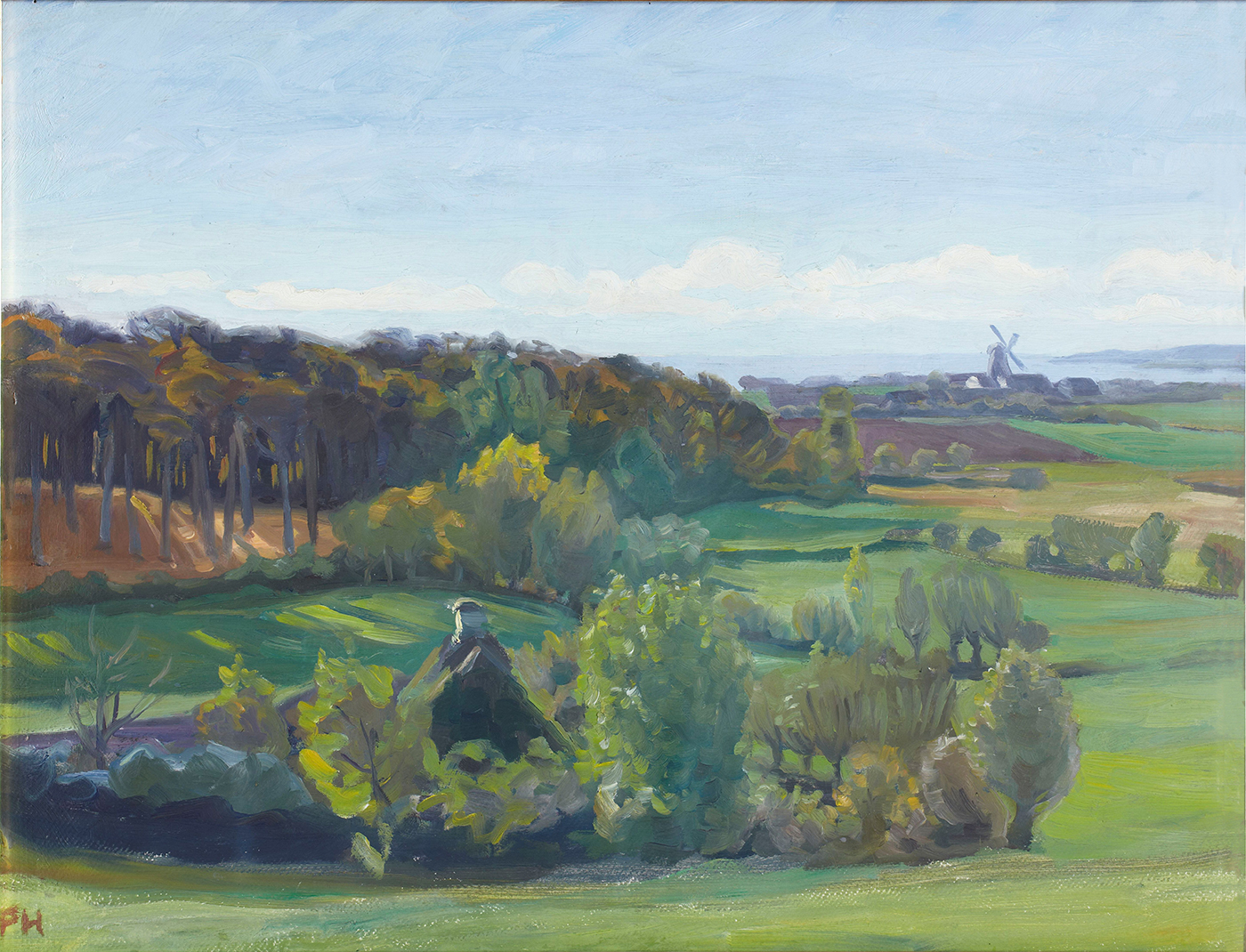
Oil on cardboard
40,5 x 52,5 cm
1905
November. Landscape near Fåborg
86,5 x 115,5 cm
1906
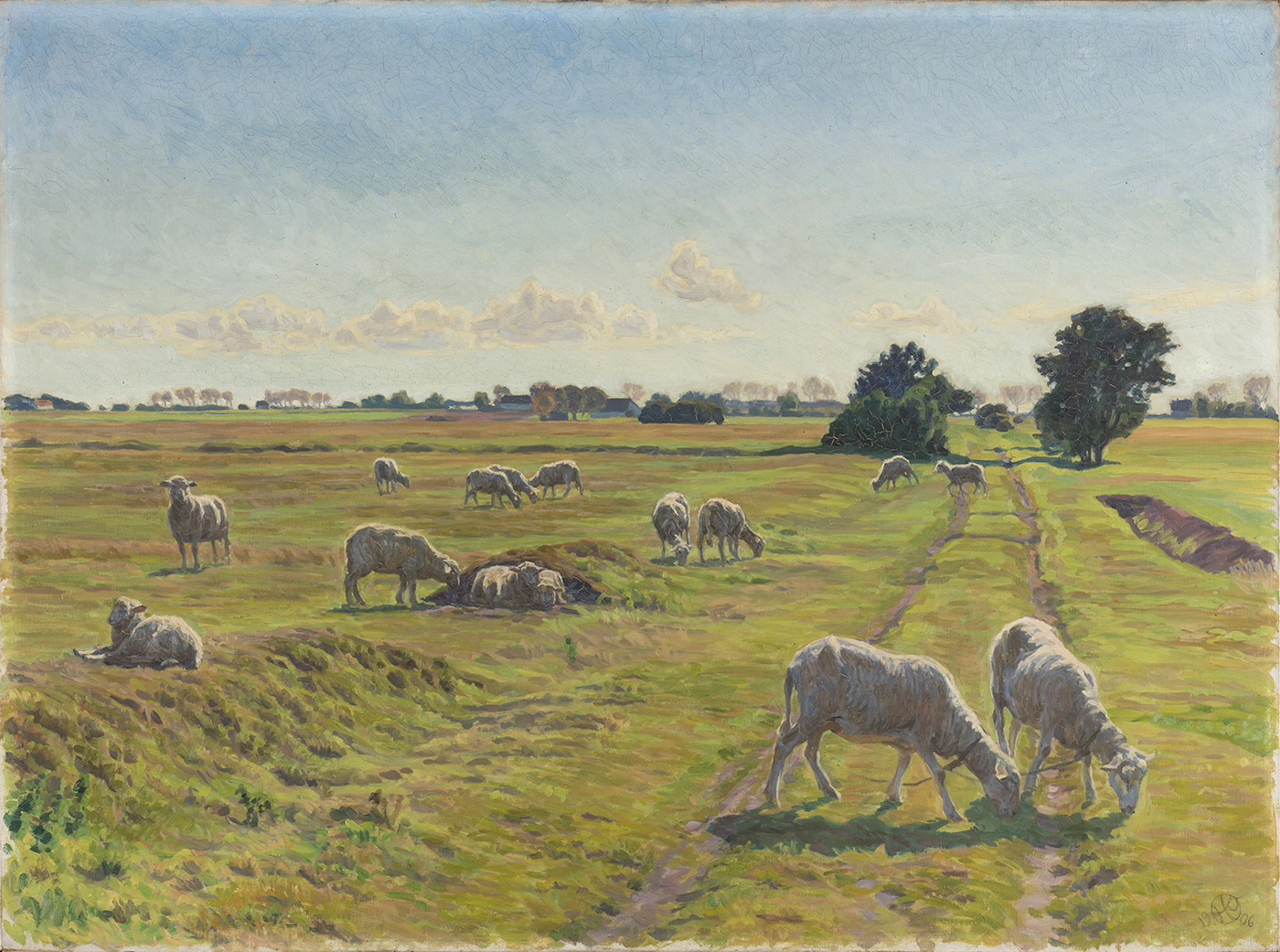
86,5 x 115,5 cm
1906
Sheep on Valby Common
61,5 x 77 cm
1906
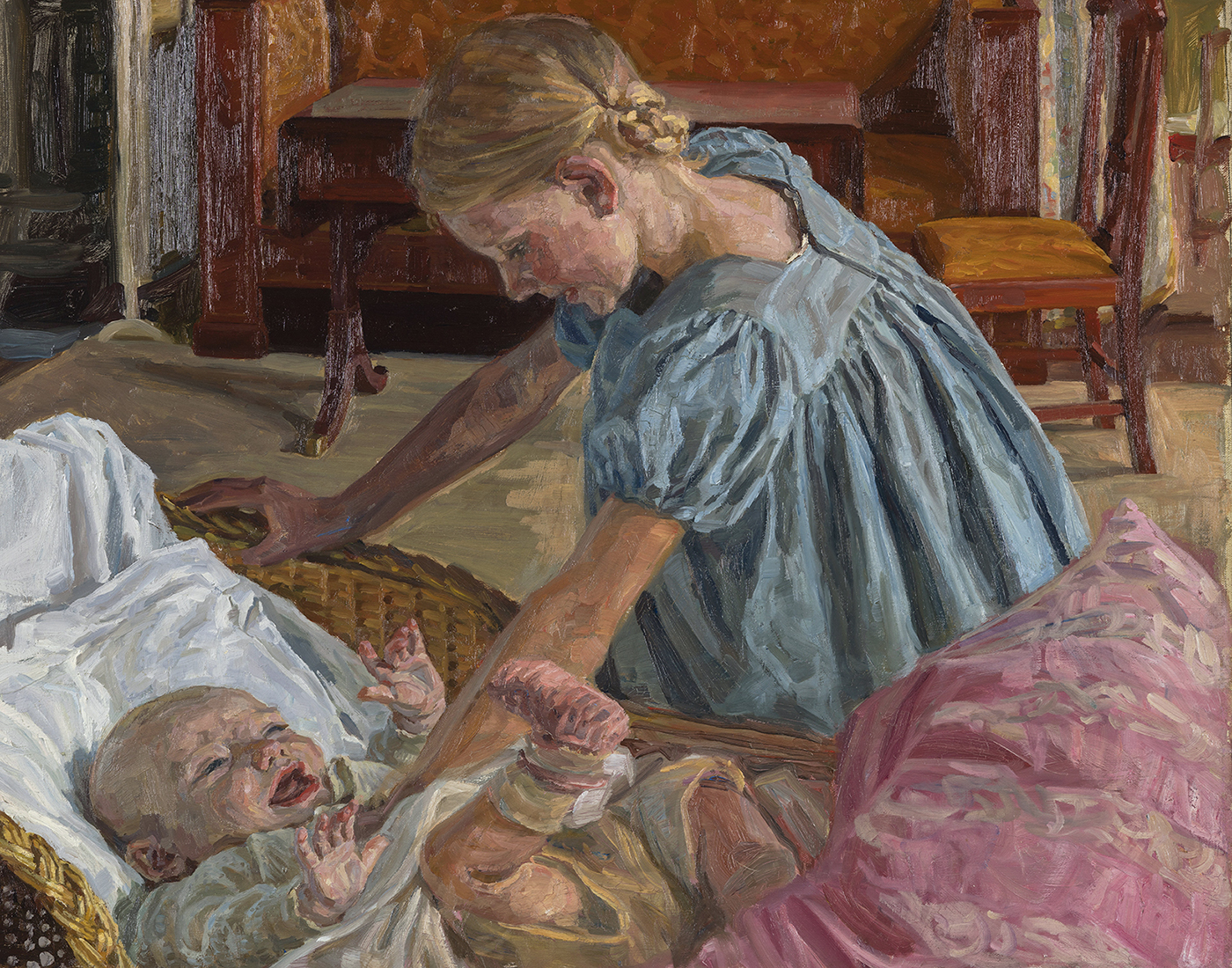
61,5 x 77 cm
1906
Sister Crying. The Artist’s Daughters
Brush, watercolor and pencil on paper
305 x 360 mm
1906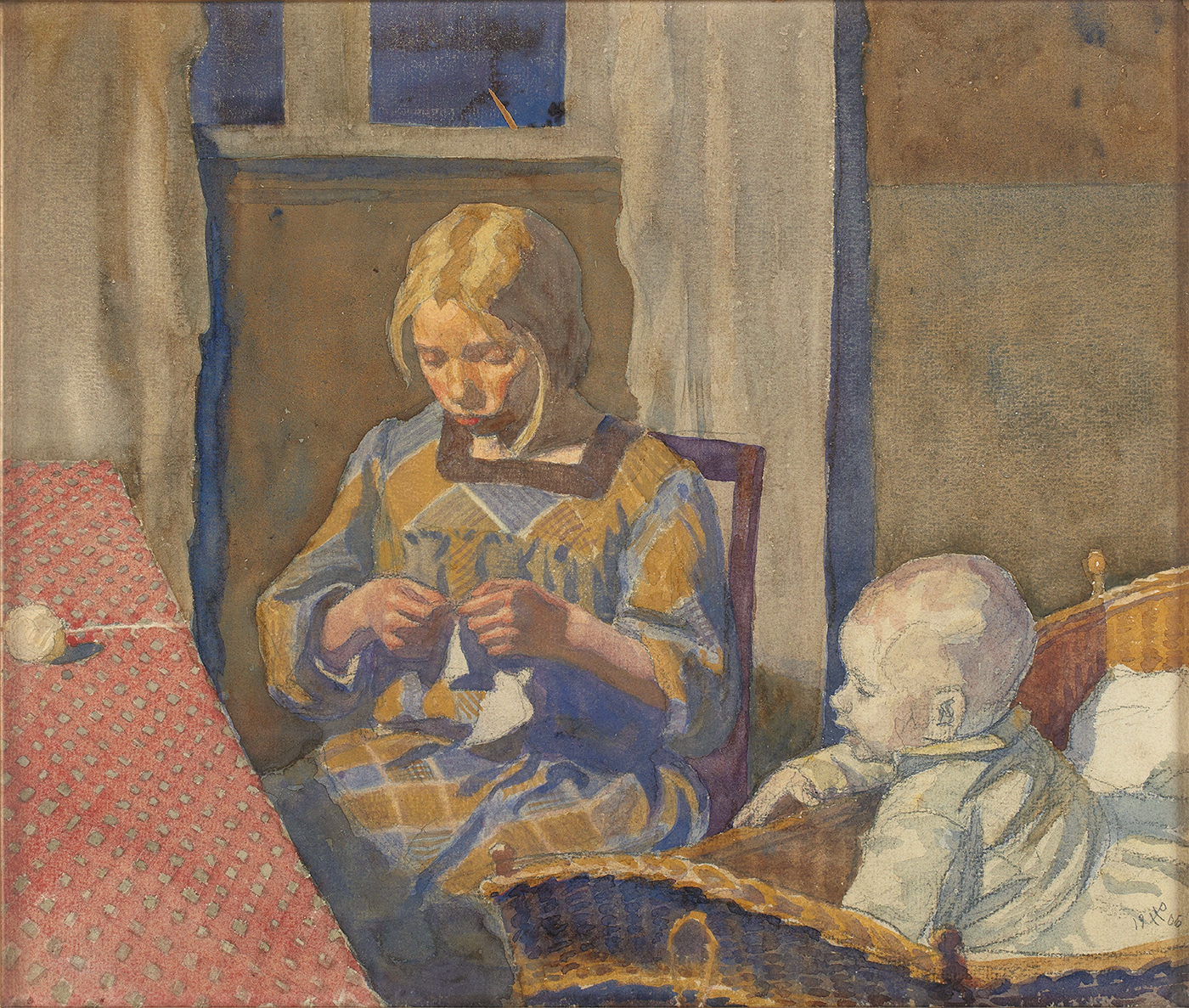
Brush, watercolor and pencil on paper
305 x 360 mm 1906
305 x 360 mm 1906
Two Sisters. The Artist’s Daughters
84,5 x 97,5 cm
1909
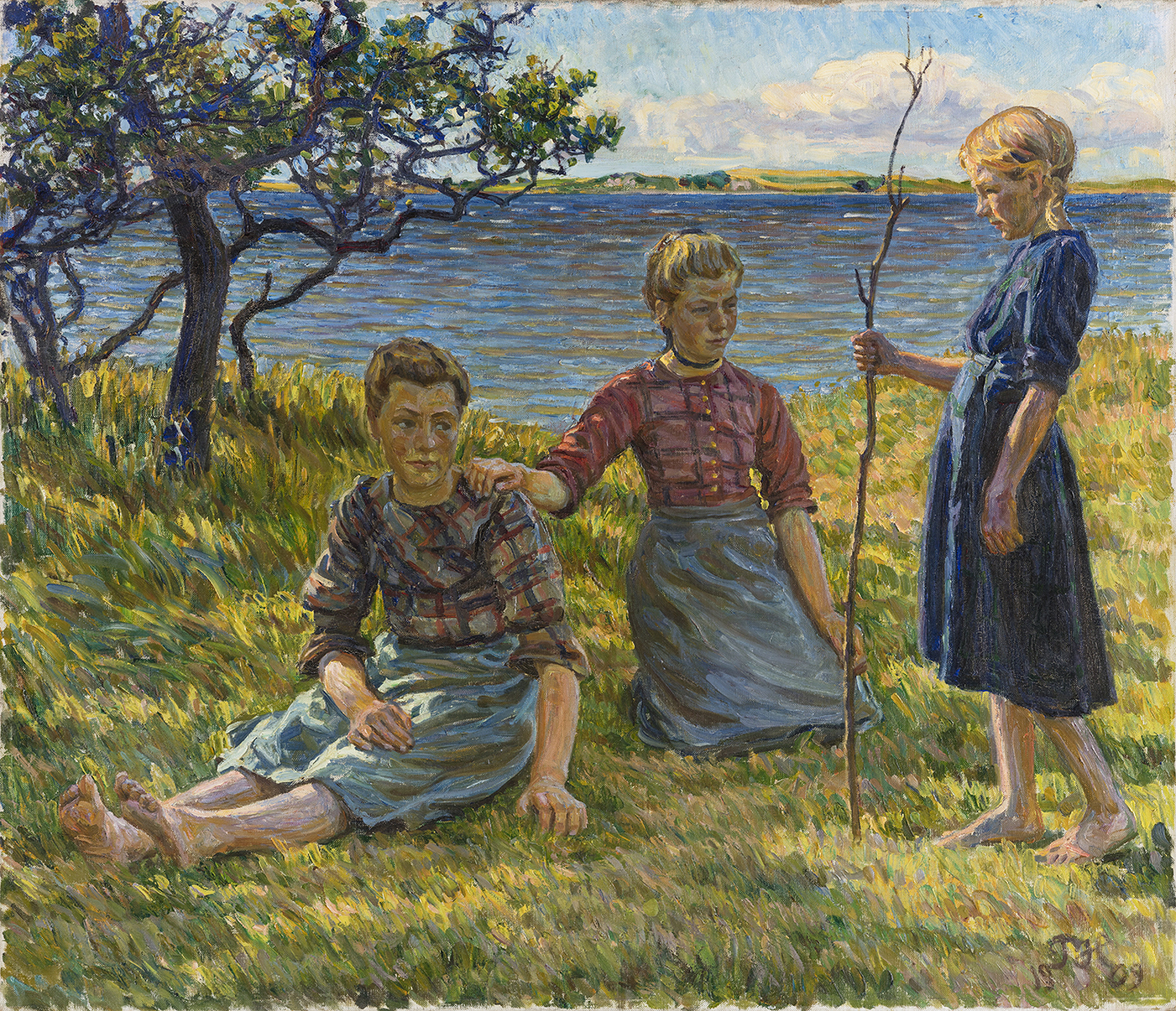
84,5 x 97,5 cm
1909